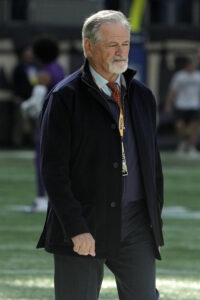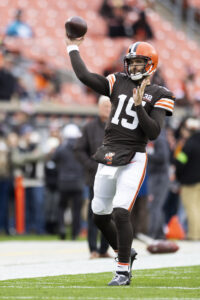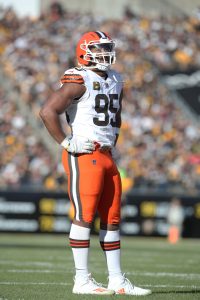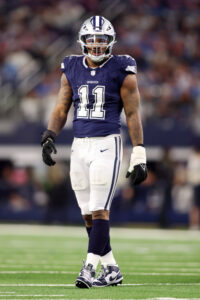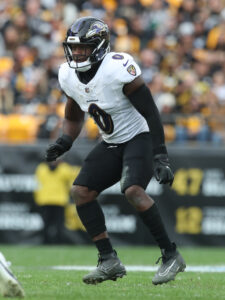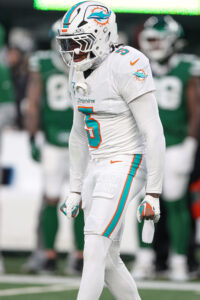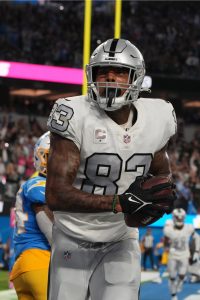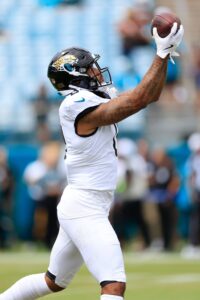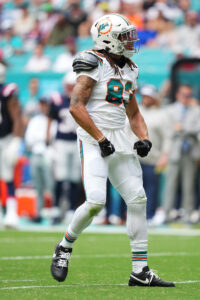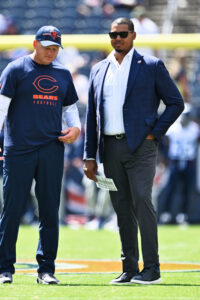The Colts entered the offseason with decision-makers on the ropes, as the Anthony Richardson decision may well be on the verge of ending Chris Ballard‘s lengthy GM stint and Shane Steichen‘s shorter HC run. Indianapolis moved on from one exec closely involved in the Richardson choice, and the team brought in Daniel Jones as competition. Thus far, signs point to that battle veering toward the six-year Giants starter.
As Jones steps into a strange savior role, considering the damage he did to the Giants’ power structure after struggling on a big-ticket contract, the Colts deviated from their usual Ballard-era free agency philosophy by signing two pricey DBs. The Colts are attempting to snap a four-season playoff drought, and jobs may be on the line. The Colts’ equation then changed drastically in May after Jim Irsay‘s death. The late owner’s oldest daughter, Carlie Irsay-Gordon, is now in control ahead of a pivotal season for the franchise.
Free agency additions:
- Charvarius Ward, CB. Three years, $54MM ($27MM guaranteed)
- Camryn Bynum, S. Four years, $60MM ($26MM guaranteed)
- Daniel Jones, QB. One year, $14MM ($13.15MM guaranteed)
- Spencer Shrader, K. Two years, $2.15MM ($750K guaranteed)
- Khalil Herbert, RB. One year, $1.34MM ($483K guaranteed)
- Corey Ballentine, CB. One year, $1.34MM ($483K guaranteed)
- Neville Gallimore, DT. One year, $1.34MM ($400K guaranteed)
- Joe Bachie, LB. One year, $1.17MM
Give Ballard credit for following through on a January mission statement. The ninth-year GM indicated his conservative free agency blueprint — an M.O. that prioritized a draft-and-develop route to the point the Colts fielded an almost entirely homegrown starting lineup last season — likely needed to change. Ballard had provided only one $20MM guarantee to a free agent in his tenure; that was Philip Rivers in a 2020 one-off. The embattled front office boss went to work on changing his stripes this offseason, as two of PFR’s top 40 free agents ended up in Indianapolis’ secondary.
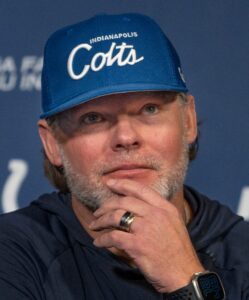 This year’s cornerback market highlighted the value of the medium-term contract. Ward joined D.J. Reed, Carlton Davis and Byron Murphy in eschewing the usual four-year second contract for three- or two-year (in Murphy’s case) accords earlier this decade. That set up the late-20-somethings for significant third contracts, deals that probably would not have been available had the quartet opted for traditional-length FA pacts earlier. A new market for the third-contract CB ended up being set in a few hours’ time in March, and the Colts outmuscled multiple suitors for Ward.
This year’s cornerback market highlighted the value of the medium-term contract. Ward joined D.J. Reed, Carlton Davis and Byron Murphy in eschewing the usual four-year second contract for three- or two-year (in Murphy’s case) accords earlier this decade. That set up the late-20-somethings for significant third contracts, deals that probably would not have been available had the quartet opted for traditional-length FA pacts earlier. A new market for the third-contract CB ended up being set in a few hours’ time in March, and the Colts outmuscled multiple suitors for Ward.
Indianapolis had kept costs low at its outside cornerback positions for most of Ballard’s tenure, allocating the most notable CB money to their slot post. Kenny Moore‘s two contracts reset the slot market in 2019 and 2024, but he had little help following the 2023 Stephon Gilmore trade. Gus Bradley‘s vanilla scheme did not feature reliable pieces outside over the past two seasons, and the Colts had seen prior developments — the Rock Ya-Sin-for-Yannick Ngakoue trade and the Isaiah Rodgers gambling suspension — affect this position. Ward now checks in as an anchor-level piece, and the Colts will hope to coax more quality work as the ex-UDFA nears 30.
The 49ers made their CB choice by extending Deommodore Lenoir last season, effectively ensuring Ward would need to sign his third contract elsewhere. Ward slogged through a down season. The former Super Bowl winner (as a Chief) did not overlap with Ballard in Kansas City, being acquired from the Cowboys (for guard Parker Ehinger) months after Ballard’s Indianapolis arrival. He signed a three-year, $40MM 49ers deal in 2022, becoming one of many Chiefs one-contract CBs under Steve Spagnuolo. Ward provided a boost for San Francisco, earning second-team All-Pro acclaim during the team’s Super Bowl LVIII season.
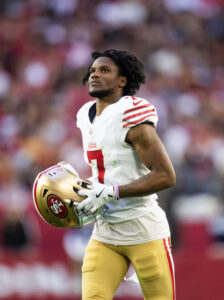 Ward, 29, led the NFL with 23 passes defensed in 2023 but saw his coverage metrics worsen last season. After allowing 56.8% and 54.1% completion rates as the closest defender in 2022 and ’23, Ward yielded 61.5% accuracy last year. This corresponded with a rise in passer rating allowed (116.6 – up from 2023’s 64.5 number). Pro Football Focus had rated Ward as a top-six corner in both 2022 and ’23, but it dropped him to 93rd during Nick Sorensen’s season in charge.
Ward, 29, led the NFL with 23 passes defensed in 2023 but saw his coverage metrics worsen last season. After allowing 56.8% and 54.1% completion rates as the closest defender in 2022 and ’23, Ward yielded 61.5% accuracy last year. This corresponded with a rise in passer rating allowed (116.6 – up from 2023’s 64.5 number). Pro Football Focus had rated Ward as a top-six corner in both 2022 and ’23, but it dropped him to 93rd during Nick Sorensen’s season in charge.
Ward, however, was playing after a family tragedy; his 1-year-old daughter died in October 2024. The Colts will bet on the proven cover man regaining his previous form, and other teams — the Chiefs included — were willing to do the same.
It was certainly interesting to see the Colts win not one but two free agency derbies for DBs. Bynum checks in as a more traditional pickup, being on his second contract and attached to a four-year pact. But the 6-foot safety will turn 27 this month. Cashing in now is paramount to a player who became an important piece as Brian Flores rebuilt the Vikings’ defense. Part of the DC’s top-five unit, Bynum excelled in a complex scheme and will join a Colts team that had mostly turned to the draft (Nick Cross, Julian Blackmon, Malik Hooker, Clayton Geathers) to staff this position over the past decade.
The safety market has fluctuated over the past several years, and the past two free agencies saw money dry up after the top targets (Jessie Bates, Xavier McKinney) signed. This year, however, teams prioritized the position. As two-high looks populate NFL defenses, four teams — the Colts, Giants (Jevon Holland), Panthers (Tre’von Moehrig) and Broncos (Talanoa Hufanga) — doled out at least $13MM per year to add a safety. Bynum is now the NFL’s 10th-highest-paid safety.
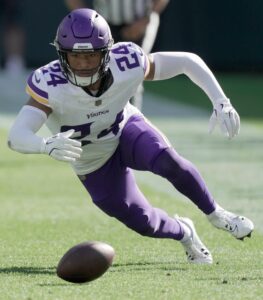 The former fourth-round pick talked terms with the Vikings, but they made Murphy a higher priority. Bynum has been durable (51 starts since 2022) and productive (eight rookie-contract INTs). PFF graded Bynum 21st among safety regulars in 2023 but slotted him outside the top 60 last year. Teams were undeterred, driving up the market.
The former fourth-round pick talked terms with the Vikings, but they made Murphy a higher priority. Bynum has been durable (51 starts since 2022) and productive (eight rookie-contract INTs). PFF graded Bynum 21st among safety regulars in 2023 but slotted him outside the top 60 last year. Teams were undeterred, driving up the market.
Bynum will join Cross, who enters a contract year after leading all DBs in 2024 tackles, as the Colts’ starting safeties. Lou Anarumo‘s group will carry considerably more firepower compared to Bradley’s Moore-dependent secondary.
Jones’ contract does not approach where the Colts went for Rivers, but the stakes attached to this Indy QB move are higher. The Giants gave the oft-underwhelming Eli Manning heir apparent six years. After two unimpressive seasons under Jason Garrett, Jones delivered a surprising breakthrough in Brian Daboll‘s 2022 Coach of the Year season. The former No. 6 overall pick ranked sixth in QBR and elevated an overmatched (save for Saquon Barkley) skill-position corps to the divisional round.
The well-timed season garnered Jones a four-year, $160MM deal. The QB’s production on that contract represents the main reason Daboll and Joe Schoen are on hot seats, making it fascinating he is now in Indy potentially tasked with cooling the temperature on Ballard and Steichen’s chairs. The Giants benched Jones after a 2-8 start, and he was no better before his midseason ACL tear in 2023. Being nearly two years removed from that injury could help unlock the former dual threat’s run-game element; Jones’ 708 rushing yards in 2022 represented an important part of the Giants’ playoff formula. But after the Giants waived Jones and the Vikings did not make him their backup, he comes to Indy with little momentum.
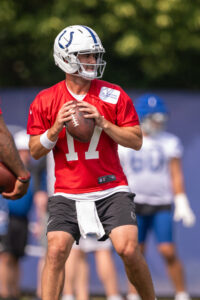 Briefly connected to Trey Lance, the Colts outbid the Vikings for Jones. They made no secret of the fact Richardson would need to compete to keep his job. Considering the concerning accuracy the former No. 4 overall draftee displayed last season, Jones viewed the Colts as a rebound gateway due to the playing time that could be available. The Vikings being set to give J.J. McCarthy the reins made that job less appealing for Jones, who still has a chance, despite the New York disappointments, to travel a Baker Mayfield– or Sam Darnold-like path via this Colts opportunity. Despite Jones’ recent struggles, he collected more guaranteed money than Mayfield or Darnold did in their rebound seasons.
Briefly connected to Trey Lance, the Colts outbid the Vikings for Jones. They made no secret of the fact Richardson would need to compete to keep his job. Considering the concerning accuracy the former No. 4 overall draftee displayed last season, Jones viewed the Colts as a rebound gateway due to the playing time that could be available. The Vikings being set to give J.J. McCarthy the reins made that job less appealing for Jones, who still has a chance, despite the New York disappointments, to travel a Baker Mayfield– or Sam Darnold-like path via this Colts opportunity. Despite Jones’ recent struggles, he collected more guaranteed money than Mayfield or Darnold did in their rebound seasons.
The Colts turning to Jones would make them only the second franchise since 1970 to use eight Week 1 starting QBs in a nine-season span; Washington’s journey to Jayden Daniels represents the other. While the Commanders’ QB carousel has stopped, Richardson faces an uphill battle to stop the Colts’. Next to nothing has gone right since Indianapolis drafted Richardson, and the dual-threat (in theory) quarterback missed key offseason time due to another shoulder injury. Richardson is expected back by training camp, but missing minicamp gave Jones a “significant” lead in the QB competition.
As previously mentioned in this space, Richardson became just the eighth 21st-century QB to complete fewer than 50% of his passes in a season on 200-plus attempts. Also on that list: Tim Tebow, JaMarcus Russell and Bengals megabust Akili Smith. Five of the seven pre-Richardson QBs on that list lost their jobs the following year; Richardson pairing his alarming 47.7% completion rate with durability concerns and maturity issues works against him — even as Jones stands at a career crossroads.
 The one-year Florida starter, who completed 53.8% of his passes for the 2022 Gators, has been unable to secure the reps necessary to develop properly. Richardson has missed 19 starts, and Steichen being concerned enough with his QB’s work habits — with the bizarre tap-out in Houston bringing that issue to light — to bench him for Joe Flacco last season gave the Colts reason to add competition. While Richardson is only 23 and tied to a fully guaranteed deal through 2026, time is running out.
The one-year Florida starter, who completed 53.8% of his passes for the 2022 Gators, has been unable to secure the reps necessary to develop properly. Richardson has missed 19 starts, and Steichen being concerned enough with his QB’s work habits — with the bizarre tap-out in Houston bringing that issue to light — to bench him for Joe Flacco last season gave the Colts reason to add competition. While Richardson is only 23 and tied to a fully guaranteed deal through 2026, time is running out.
Not doing much to replace Zack Moss behind Jonathan Taylor last year, the Colts added the Bengals’ Moss injury fill-in to man that spot. Herbert has flashed as a pro, averaging 5.7 yards per carry in 2022 — for a Bears offense that led the NFL in rushing — and 4.6 in 2023. The sixth-round speedster combined to amass 1,342 yards in that span, but the Bears signed D’Andre Swift to take over their backfield in 2024. Herbert ranked fourth in Next Gen Stats’ rush yards over expected metric in 2022; that form assuredly helped the Colts look past a down contract year (36 carries, 130 yards with the Bears and Bengals).
Re-signings:
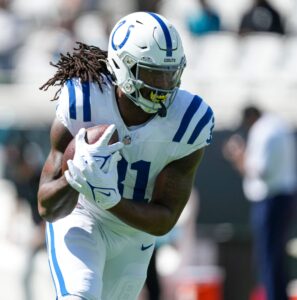 Quietly, Alie-Cox has become one of the longest-tenured tight ends in Colts history. The college basketball convert can move into fifth place for games played among Colts tight ends, past Dallas Clark, by playing only eight games this season. Sitting on 108 for his career, Alie-Cox will match Clark, Jack Doyle and Hall of Famer John Mackey‘s nine-year Colt tenures in 2025. Only two tight ends (Marcus Pollard and Tecmo-era staple Pat Beach) have played 10 seasons with the team.
Quietly, Alie-Cox has become one of the longest-tenured tight ends in Colts history. The college basketball convert can move into fifth place for games played among Colts tight ends, past Dallas Clark, by playing only eight games this season. Sitting on 108 for his career, Alie-Cox will match Clark, Jack Doyle and Hall of Famer John Mackey‘s nine-year Colt tenures in 2025. Only two tight ends (Marcus Pollard and Tecmo-era staple Pat Beach) have played 10 seasons with the team.
Alie-Cox, 31, has played between 38-55% of Indy’s offensive snaps over the past five seasons. Jelani Woods‘ injury struggles have kept him a key piece, though the enduring presence accepted a steep pay cut — after playing out a three-year, $17.55MM contract — weeks before the Colts’ Tyler Warren move.
Notable losses:
- Julian Blackmon, S
- Taven Bryan, DT
- Raekwon Davis, DT (released)
- Sam Ehlinger, QB
- Joe Flacco, QB
- Tre Flowers, CB
- Will Fries, G
- Matt Gay, K (released)
- Mark Glowinski, G
- Kylen Granson, TE
- Ronnie Harrison, S
- Ryan Kelly, C
- Dayo Odeyingbo, DE
- Trey Sermon, RB
- E.J. Speed, LB
- Grant Stuard, LB
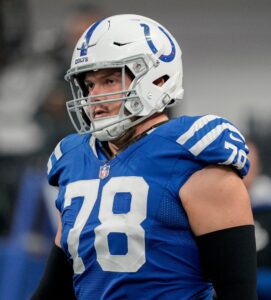 The last link to the Ryan Grigson rosters, Kelly expressed interest over multiple offseasons in staying with the Colts. The 2016 first-round pick played out a four-year, $49.65MM extension and joined Quenton Nelson and Braden Smith as staples that helped both Taylor to the rushing title and Andrew Luck post a Comeback Player of the Year campaign three years prior. While Kelly and the Colts talked, it became clear he would hit the market. Both he and Fries ended up in Minnesota, where Grigson is a front office staffer.
The last link to the Ryan Grigson rosters, Kelly expressed interest over multiple offseasons in staying with the Colts. The 2016 first-round pick played out a four-year, $49.65MM extension and joined Quenton Nelson and Braden Smith as staples that helped both Taylor to the rushing title and Andrew Luck post a Comeback Player of the Year campaign three years prior. While Kelly and the Colts talked, it became clear he would hit the market. Both he and Fries ended up in Minnesota, where Grigson is a front office staffer.
Fries commanded a big market despite going down in Week 5 of last season with a broken leg. Being 32, Kelly did not attract similar free agency interest, but he still will replace Garrett Bradbury as the Vikings’ starting center — on a two-year, $18MM deal. Fries was the only free agent to sign a five-year deal this offseason, scoring $87.72MM on a deal that secured $34MM guaranteed at signing. Minnesota’s O-line overhaul will deal a blow to the Colts.
Kelly missed seven games last season, undergoing knee surgery that keyed an IR placement. Prior to last season, though, the Alabama alum earned four Pro Bowl nods and a second-team All-Pro honor. ESPN’s pass block win rate metric still placed Kelly 10th among interior O-linemen last season, and PFF graded Kelly’s most recent full season (2023) well by placing him eighth among centers.
Read more
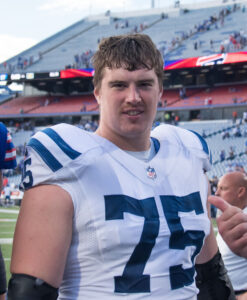 Fries took over as Pinter’s replacement midway through the Colts’ wildly disappointing 2022 season; by 2023, the former seventh-round find was a 17-game starter. Last year, Fries was off to his best start; PFF ranked him second among guards at the time he went down. Fries expressed interest in staying, and the Colts made a push to keep him. But the bidding involved a number of teams — including the Cardinals, Giants, Patriots and Seahawks — and the Colts stood down.
Fries took over as Pinter’s replacement midway through the Colts’ wildly disappointing 2022 season; by 2023, the former seventh-round find was a 17-game starter. Last year, Fries was off to his best start; PFF ranked him second among guards at the time he went down. Fries expressed interest in staying, and the Colts made a push to keep him. But the bidding involved a number of teams — including the Cardinals, Giants, Patriots and Seahawks — and the Colts stood down.
Third- and fourth-round picks from the 2024 draft are favored to replace the departed blockers. Tanor Bortolini, a fourth-rounder, filled in for Kelly last season and is ticketed to start this year. Three years remain on his contract and Matt Goncalves‘. After the third-round draftee primarily filled in for Smith at right tackle last season, the Colts are kicking him inside to guard. This will be an interesting challenge for Goncalves, who played only tackle in college and logged all of one guard snap in 2024. If Goncalves cannot make the transition, UDFA Dalton Tucker (seven 2024 starts) looms as an option.
A former second-round pick who mixed in at both defensive end and D-tackle, Odeyingbo drew a strong Bears offer (three years, $48MM). Posting back-to-back seasons of 17 QB hits, Odeyingbo helped the Colts after Samson Ebukam‘s season-nullifying Achilles tear last year. The Purdue product posted 16 TFLs over the past two seasons and registered eight 2023 sacks. Ebukam is due back in a contract year, and the Colts have both DeForest Buckner and Grover Stewart signed to eight-figure-per-year deals. Odeyingbo’s exit also clears a path for 2024 first-rounder Laiatu Latu, whose performance will be a top Colts 2025 storyline.
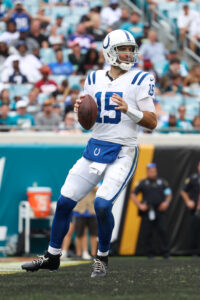 If Flacco’s stunning Browns showing two years ago is removed from the equation, the former Super Bowl MVP’s post-Baltimore career has brought little of consequence. He followed a brief Broncos cameo with unremarkable Jets QB2 work, and the aging passer could not justify Steichen’s plan to demote Richardson in order to make a playoff push. That lasted just two games, as Richardson reacquired his job. Flacco still completed 65.3% of his passes, lightyears ahead of Richardson’s work. Although he piloted the Colts to two wins, Flacco — now back in Cleveland on a one-year, $4.25MM deal — was never a realistic candidate to re-sign.
If Flacco’s stunning Browns showing two years ago is removed from the equation, the former Super Bowl MVP’s post-Baltimore career has brought little of consequence. He followed a brief Broncos cameo with unremarkable Jets QB2 work, and the aging passer could not justify Steichen’s plan to demote Richardson in order to make a playoff push. That lasted just two games, as Richardson reacquired his job. Flacco still completed 65.3% of his passes, lightyears ahead of Richardson’s work. Although he piloted the Colts to two wins, Flacco — now back in Cleveland on a one-year, $4.25MM deal — was never a realistic candidate to re-sign.
As Shaquille Leonard‘s injury trouble (and issues fitting into Bradley’s scheme) mounted, Speed became the Colts’ answer alongside Zaire Franklin. The Colts turned to the 2019 fifth-rounder as a full-time presence down the stretch in 2023, and he smashed his career-high work rate last season. Speed logged 98% of Indy’s defensive snaps, making 142 tackles. The new Texans LB posted 19 TFLs over the past two seasons.
Using much of their allocated free agent funds in the secondary, the Colts made low-cost depth additions in Joe Bachie and Jacob Phillips. But Jaylon Carlies, a 2024 fifth-round pick, is on track to be Indy’s Speed replacement. Six years younger than Speed, Carlies enters his age-24 season having made six rookie-year starts and logging 242 defensive snaps.
Draft:
- Round 1, No. 14: Tyler Warren (TE, Penn State) (signed)
- Round 2, No. 45: J.T. Tuimoloau (DE, Ohio State)
- Round 3, No. 80: Justin Walley (CB, Minnesota) (signed)
- Round 4, No. 127 (from Rams): Jalen Travis (T, Iowa State) (signed)
- Round 5, No. 151: DJ Giddens (RB, Kansas State) (signed)
- Round 6, No. 189: Riley Leonard (QB, Notre Dame) (signed)
- Round 6, No. 190 (from Falcons through Rams): Tim Smith (DT, Alabama) (signed)
- Round 7, No. 232: Hunter Wohler (S, Wisconsin) (signed)
The Colts are on a lengthy drought without a productive pass catcher at tight end. Indianapolis has not seen a tight end tally more than 400 receiving yards in a season this decade. Eric Ebron proved a one-year answer in 2018, and Jack Doyle did not move the needle much as a target following the Ebron signing. As 2022 third-rounder Jelani Woods has missed all of the past two seasons, after being chosen to work in Frank Reich‘s offense, the Colts carried a glaring need entering the draft.
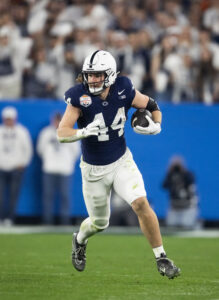 Colts-Warren connections emerged early in the pre-draft process, after he had delivered one of the most impactful tight end seasons in recent college football history. Warren stampeded to a 1,233-yard receiving season on 104 receptions, but Penn State utilized his athleticism as a rusher as well. Warren tacked on 218 rushing yards for the CFP semifinalist, totaling 12 touchdowns during a breakthrough senior season.
Colts-Warren connections emerged early in the pre-draft process, after he had delivered one of the most impactful tight end seasons in recent college football history. Warren stampeded to a 1,233-yard receiving season on 104 receptions, but Penn State utilized his athleticism as a rusher as well. Warren tacked on 218 rushing yards for the CFP semifinalist, totaling 12 touchdowns during a breakthrough senior season.
A five-year Nittany Lion, Warren had never surpassed 450 receiving yards in a season prior to last year. NFL-bound tight ends Brenton Strange and Theo Johnson had previously served as impediments. Entering his senior slate behind Colston Loveland as a tight end prospect, Warren rocketed onto the first-round radar and drew speculation about becoming the first TE off the board. Ultimately, the Bears preferred Loveland’s traditional profile.
Still, the Colts not having to trade up to fill such a massive need at No. 14 proved a nice break. Although Loveland may be the more polished route runner, Warren will be asked to provide immediate help for Jones and/or Richardson.
Tuimoloau arrived weeks after Odeyingbo’s Bears defection. He joins a Colts team still rostering 2021 first-rounder Kwity Paye, who is on a fifth-year option, and one that selected Latu 15th overall last year. Ebukam is in a contract year. The Colts declined trade-down offers early and have one of Division I-FBS’ top rushers entering the fray.
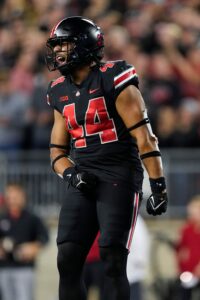 One of many Buckeyes drafted this year, Tuimoloau’s dominance played a key part in their national championship season. After a five-sack 2023, the edge rusher ripped off 12.5 to go with 22 TFLs and two forced fumbles as a senior. Tuimoloau does not profile as a speed rusher, checking boxes as a power player who can hold up against the run. While Ebukam and Paye’s presences figure to limit him to rotational duty this season, a roadmap to a starting role by 2026 exists. Nothing of note has come out on a Paye extension, but that does represent a variable here.
One of many Buckeyes drafted this year, Tuimoloau’s dominance played a key part in their national championship season. After a five-sack 2023, the edge rusher ripped off 12.5 to go with 22 TFLs and two forced fumbles as a senior. Tuimoloau does not profile as a speed rusher, checking boxes as a power player who can hold up against the run. While Ebukam and Paye’s presences figure to limit him to rotational duty this season, a roadmap to a starting role by 2026 exists. Nothing of note has come out on a Paye extension, but that does represent a variable here.
Rumblings about Walley being a slot option have surfaced, and the Minnesota alum impressed during the offseason program. The Colts are set to pair Moore with Ward and either Jaylon Jones or JuJu Brents. The 2023 second-rounder, though, has been unable to stay on the field through two seasons. That opened the door for a long Jones runway of starts.
It will be interesting if Walley, at 5-foot-10, affects Indianapolis’ boundary CB plans this year or if he is more of a dime back. Moore’s contract pays out the last of its guarantees this year, the CB’s age-30 season. Walley’s rookie-year performance could impact the slot staple in 2026.
Extensions and restructures:
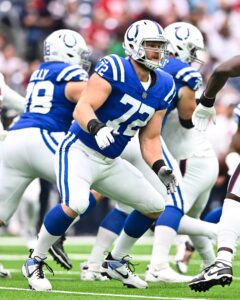 One of the NFL’s best right tackles going into last season, Smith ran into a health issue that sidelined him down the stretch. The Colts placed the veteran RT on their reserve/NFI list, and Smith later cited an OCD diagnosis as the reason behind the absence. He vowed to return for his age-29 season, but the Colts did come in with a pay-cut request. Smith accepted and is back in place in his usual post.
One of the NFL’s best right tackles going into last season, Smith ran into a health issue that sidelined him down the stretch. The Colts placed the veteran RT on their reserve/NFI list, and Smith later cited an OCD diagnosis as the reason behind the absence. He vowed to return for his age-29 season, but the Colts did come in with a pay-cut request. Smith accepted and is back in place in his usual post.
PFF slotted Smith as a top-20 tackle each year from 2019-23; in his most recent full season, Smith graded as PFF’s No. 5 overall tackle and drew high marks, via ESPN, in both the pass block and run stop win rate metrics. In that time, Smith signed a four-year, $70MM ($32MM at signing) extension.
The Colts fortified two spots along their O-line in the 2018 draft, as he and Nelson both plowed roads for Taylor’s rushing title and gave Marlon Mack lanes toward a 1,000-yard season before that. Nelson is signed for two more seasons, but Smith is in a contract year that does not feature any guaranteed money.
Other:
A tragedy brought the most significant Colts news this offseason. Irsay, who had been in place as the team’s owner for more than 25 years, was one of the NFL’s more colorful characters. Although some of his remarks were not always helpful to the Colts’ cause, the outspoken leader was wholly committed to his team. Irsay was in place as Colts GM from 1984-93, when his father — a far more controversial figure in NFL history — owned the team. The Eric Dickerson trade notwithstanding, the Colts did not deliver much of consequence during their first several Indianapolis years. They began to turn a corner in the mid-1990s.
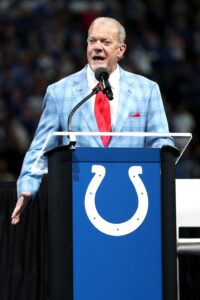 Irsay had begun a de facto ownership tenure when his father suffered a stroke in 1995. In Year 2 in an official ownership role by 1998, the Colts secured the No. 1 overall pick and access to the best quarterback prospect since John Elway. Fifteen years after his father traded Elway’s rights without consulting his then-GM (Ernie Accorsi), Irsay had Hall of Fame-bound GM Bill Polian in place when Peyton Manning arrived. Seeing the all-time great take a big step forward in 1999, the Colts established a sturdy foundation when Irsay hired Tony Dungy in 2002.
Irsay had begun a de facto ownership tenure when his father suffered a stroke in 1995. In Year 2 in an official ownership role by 1998, the Colts secured the No. 1 overall pick and access to the best quarterback prospect since John Elway. Fifteen years after his father traded Elway’s rights without consulting his then-GM (Ernie Accorsi), Irsay had Hall of Fame-bound GM Bill Polian in place when Peyton Manning arrived. Seeing the all-time great take a big step forward in 1999, the Colts established a sturdy foundation when Irsay hired Tony Dungy in 2002.
The Colts won at least 12 games each year from 2003-09, venturing to two Super Bowls (winning Super Bowl XLI) and seeing Manning win four MVP honors. After Manning’s neck injury led to a March 2012 release, Luck was waiting. Luck’s career did not go as expected, even though bright flashes commenced when the future Stanford GM was healthy, and Irsay’s team has struggled to replace him.
Irsay’s overreach in the post-Luck period featured instructions to trade Carson Wentz, to acquire Matt Ryan and then to bench Ryan. His comments also made Ballard’s 2023 Jonathan Taylor negotiations more difficult. The most notable example of Irsay meddling took place in 2022, when he went against Ballard’s advice and hired Jeff Saturday as interim HC. The Colts center great and now-two-stint ESPN analyst predictably struggled, and doubts about the Colts’ direction multiplied.
Richardson has not done much to quiet those, and Irsay’s three daughters are now steering the ship. The oldest of that trio, Irsay-Gordon (44), leads the way. While the Irsay daughters have vowed to let Ballard and Steichen operate without ownership interference, Irsay-Gordon has been a headset presence on gamedays in preparing for a future ownership role. That continuing will be an interesting Colts storyline, now that she holds decision-making autonomy. Her comments about Ballard and Steichen’s performances also could ramp up pressure for a turnaround.
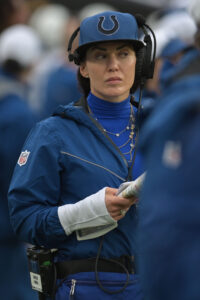 The exec who championed Richardson in the runup to the 2023 draft, Brown and the Colts went their separate ways this offseason. Brown was a GM candidate in the late 2010s, but not in recent years. Higher-profile figures could fall if the QB situation does not improve this season.
The exec who championed Richardson in the runup to the 2023 draft, Brown and the Colts went their separate ways this offseason. Brown was a GM candidate in the late 2010s, but not in recent years. Higher-profile figures could fall if the QB situation does not improve this season.
Bradley’s defensive scheme enjoyed a memorable run, highlighted by the success the Seahawks and 49ers achieved using it. But the Colts have struggled defensively since Matt Eberflus departed for Chicago in 2022. Indianapolis ranked as a top-10 defense thrice in Eberflus’ four-year tenure; they did not move inside the top 20 during Bradley’s run. Bradley’s crew did set an Indianapolis-era franchise sack mark (51) in 2023, but the Colts struggled in coverage.
The death blow for Bradley may well have been Drew Lock slicing up his defense in Week 17, quarterbacking the two-win Giants to a 45-33 upset win that eliminated the Colts from the playoffs and dropped New York out of the No. 1 draft slot. Bradley, who had been a DC or head coach each year from 2009-24, is now working under former protege Robert Saleh in San Francisco.
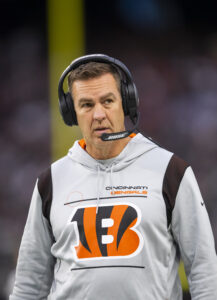 Anarumo, 59, interviewed twice for the Cardinals’ HC job in 2023. He had built momentum by devising a gameplan that flummoxed Patrick Mahomes in the second half of the 2021 AFC championship game. Still the NFL’s most prolific passer at that juncture, Mahomes struggled as the Chiefs scored three second-half points in blowing an 18-point halftime lead. After the narrow Super Bowl LVI loss, the Bengals’ defense ranked sixth in 2022.
Anarumo, 59, interviewed twice for the Cardinals’ HC job in 2023. He had built momentum by devising a gameplan that flummoxed Patrick Mahomes in the second half of the 2021 AFC championship game. Still the NFL’s most prolific passer at that juncture, Mahomes struggled as the Chiefs scored three second-half points in blowing an 18-point halftime lead. After the narrow Super Bowl LVI loss, the Bengals’ defense ranked sixth in 2022.
The six-year Cincinnati defensive boss became available after his defense nosedived last season, denying an MVP-caliber Joe Burrow season from even producing a playoff berth. Despite Trey Hendrickson‘s All-Pro season, the Bengals ranked 25th in points and yards allowed. Anarumo’s defense also allowed the second-most yards in 2023. The shootout formula dragged the Bengals to a 9-8 record last season, but new Bears HC Ben Johnson had shown interest in taking Anarumo with him. Quick Colts action prevented that, and Anarumo will be critical to a mission that almost definitely will not involve high-level quarterback play.
Top 10 cap charges for 2025:
- DeForest Buckner, DT: $26MM
- Michael Pittman Jr., WR: $23MM
- Quenton Nelson, G: $22.76MM
- Jonathan Taylor, RB: $15.38MM
- Daniel Jones, QB: $14.45MM
- Grover Stewart, DL: $14.25MM
- Kwity Paye, DE: $13.39MM
- Kenny Moore, CB: $10.69MM
- Samson Ebukam, DE: $10.49MM
- Braden Smith, RT: $10.4MM
Week 1 will mark more than six years since Luck’s retirement. The Colts are 1-for-6 in playoff berths in that span, and Ballard’s popularity has certainly freefallen in Indianapolis. While no current Colt’s popularity will approach Caitlin Clark’s, their latest roster houses a mix of veteran stalwarts and young skill-position players who, thanks largely to the post-Luck passer carousel, enter 2025 with untapped potential.
If Richardson were to hold off Jones for the QB1 job, the Colts would be poised to start 11 homegrown players on offense. For all that was made of Ballard’s free agency pivot, a Richardson-over-Jones path will show effects of the GM’s long-held strategy. With Taylor, Pittman and Warren fronting an offense that carries three rookie-deal Day 2 picks at WR (Alec Pierce, Josh Downs, Adonai Mitchell), Jones winning the job would mean the much-criticized QB will have — perhaps by far — the most well-rounded group of skill array of his career. PFF placing the Colts’ 2024 O-line — even with Kelly, Fries and Smith missing chunks of the season — 12th last year also represents new territory for Jones, who played behind mostly dreadful Giants blocking groups (PFF even ranked New York’s 2022 playoff O-line 30th).
Richardson not making a belated leap or Jones not mounting a Mayfield- or Darnold-like resurgence would stand to put Irsay-Gordon to a big-picture decision come 2026. For now, the Colts will hope one of their passer plans can help a veteran core waiting for a quarterback to push it to relevance. A deep AFC makes the Colts underdogs for their first playoff berth since 2020, but Ballard and Steichen are banking on one of their two QB plans paying off.
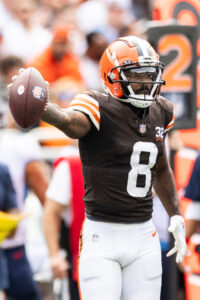 Although the Bills gave Josh Palmer a three-year, $29MM deal in free agency, they were in on receivers during the draft. The team’s haul included a pick at the position — No. 240 overall pick Kaden Prather (Maryland) — but it certainly sounds like an earlier add was strongly considered. The team felt it needed to make a post-draft move to address the position.
Although the Bills gave Josh Palmer a three-year, $29MM deal in free agency, they were in on receivers during the draft. The team’s haul included a pick at the position — No. 240 overall pick Kaden Prather (Maryland) — but it certainly sounds like an earlier add was strongly considered. The team felt it needed to make a post-draft move to address the position.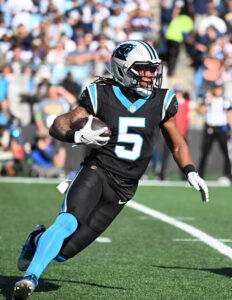 A former Jaguars second-round pick, Shenault showed some early-career promise at receiver by posting 600-plus-yard seasons in 2020 and ’21. This Bills regime liked the Colorado alum’s skillset entering the 2020 draft, per Buscaglia, and the NFL’s emphasis on increasing kick-return volume works in the veteran returner’s favor.
A former Jaguars second-round pick, Shenault showed some early-career promise at receiver by posting 600-plus-yard seasons in 2020 and ’21. This Bills regime liked the Colorado alum’s skillset entering the 2020 draft, per Buscaglia, and the NFL’s emphasis on increasing kick-return volume works in the veteran returner’s favor.
